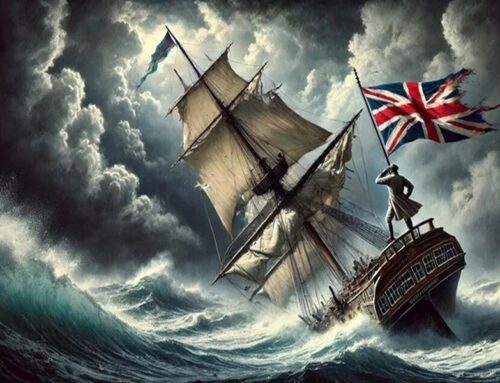B1C Both to Blame Collision cover
Many of you will have looked at the “Both to Blame Collision” wording in the Institute Cargo Clauses but how many understand the nature of this cover? Has anyone actually dealt with a claim under this wording? In case you have ever wondered about the meaning of this cover please read the following explanation
Insurance for “Both to Blame Collision” liability is provided by all the Institute cargo clauses, as part of the standard additional cover alongside general average and salvage charges
Both to Blame Collision liability is a fairly complex process involving only vessels whose owners incorporate the “Both to Blame Collision Clause” in their bills of lading, usually when entering USA waters. Unlike the rest of the world, which accepts the principle of proportional responsibility when two ships collide and both contribute to the collision, American courts originally applied the “Both to Blame Collision” rule on both ships and apportioned liability on a 50/50 basis
However, the strict application of the 50/50 apportionment was changed in 1975 following judgement in the case of United States v Reliable Transfer Co., Inc., 421 U.S. 397 (1975) No. 74-363, which reads
The admiralty rule of divided damages, whereby the property damage in a maritime collision or stranding is equally divided whenever two or more parties involved are found to be guilty of contributory fault, regardless of the relative degree of their fault, held replaced by a rule requiring liability for such damage to be allocated among the parties proportionately to the comparative degree of their fault, and to be allocated equally only when the parties are equally at fault or when it is not possible fairly to measure the comparative degree of their fault
Thus the American default position is no longer 50/50
The ‘Both to Blame’ clause also contains the description “non-carrying vessel”, which tends to confuse its meaning by implying that it was not carrying goods. This is unlikely to have been the case unless that vessel was sailing in ballast. It will almost certainly have been carrying goods. Furthermore, if the roles are reversed by fault laying exclusively with vessel A, described in the example that follows, the same type of claim can be made but instead it will emanate from the owner of goods on board the ship described as the “non-carrying vessel.”
The description, ‘non-carrying vessel’ may be better understood if it is referred to as the third party vessel because ‘third party’ is a phrase which is commonly used to identify the other party to an action in tort. So, for example, if ship A collides with a third party ship, due to the fault of that third party vessel, the owner of any goods in ship A which are damaged or lost by the fault of the third party can claim 100% of the damage from the owners of the third party vessel. However, because of the Both to Blame Collision rule, and in circumstances where the apportionment is 50/50, the owner of the third party vessel has the right to claim 50% of that liability from the owners of ship A. This leaves shipowner A with a bill for half the cost of the damage, so ship owner A passes that cost back to the owner of the goods by way of the Both to Blame Collision Clause in the bill of lading. This liability is covered by the standard institute cargo clauses. In a claim in which the 50/50 rule is applied the following example should assist in explaining this rule:
Vessel A is the carrying ship Both vessels are liable for 50%
but
Vessel B, the third party ship, is fully responsible for the collision
Damage to cargo in vessel A: $100,000
Damage to ship B (third party) $ 50,000
The owner of the goods in ship A cannot demand damages from the ship
owner A under the provisions of the bill of lading because ship A was not
at fault in the collision
Ship owner B pays $100,000 to the owner of the goods in ship A
Ship owner B then claims 50% of $100,000 from ship owner A under the ‘Both to Blame Collision’ rule
Ship owner B also claims 50% of his own damage of $50,000 from ship owner A, also under the ‘Both to Blame Collision’ rule
Total claimed by shipowner B from A under the Both to Blame rule is $75,000.
Ship owner A pays B a total of $75,000 and demands $50,000 from the owners of the damaged goods by way of the contractual agreement in the bill of lading, provided it contained the ‘Both to Blame Collision’ clause
The liability of the goods owner is covered by the ‘Both to Blame Collision cover in the Institute Cargo Clauses, as we stated at the beginning of this part of the chapter
The end result is that a maritime liability imposed upon a ship owner by American law is recoverable from the owner of the goods in the contract of affreightment evidenced by the bill of lading. The owner of the goods recovers this outlay by making a claim against his cargo insurer, so it is the insurer which ends up footing the bill






